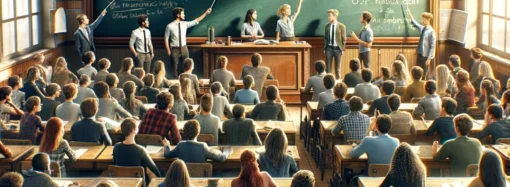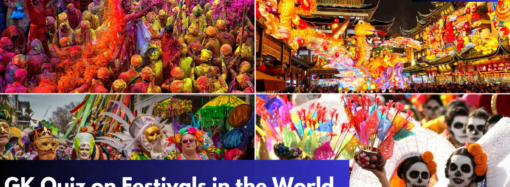GOOD MORNING FOLKS! IT’S A TEA TIME AND WE ARE HERE WITH OUR NEW ENDEAVOR – “READ EDITORIAL WITH D2G”. SO FRESHEN YOUR EYES, PUT YOUR PILLOWS BACK AND TAKE A SIP OF YOUR TEA WHILE ENJOYING THIS SHORT PIECE OF A NOTE.
EPISODE – VI
TOPIC: The monk who’s sold on maths
BLOG: The Hindu
WRITER: Jayant Sriram
GENRE: Interview
READ BEFORE YOU PROCEED:
D2G wears no responsibility of the views published here by the respective Author. This Editorial is used here for Study Purpose. Students are advised to learn the word-meaning, The Art of Writing Skills and understand the crux of this Editorial.
MEANINGS are given in BOLD and ITALIC
With his flowing saffron(Saffron is a yellowish-orange colour.) robes(A robe is a loose piece of clothing which covers all of your body and reaches the ground. ) and deep voice, professor Mahan Maharaj cuts a distinctive figure on the campus of the Tata Institute of Fundamental Research in South Mumbai.
A member of the Ramakrishna Mission monastic(Monastic means relating to monks or to a monastery.) order founded in 1897 by Swami Vivekananda, he became the newest member of the premier institute’s mathematics faculty on November 16.
 About two hours later, he learned that he had been awarded the prestigious Infosys Science Prize — one of India’s highest monetary awards for scientific achievement — for his work in an important sub-field of geometric topology.
About two hours later, he learned that he had been awarded the prestigious Infosys Science Prize — one of India’s highest monetary awards for scientific achievement — for his work in an important sub-field of geometric topology.
Taking a little time out from his research, professor Maharaj spoke to The Hindu about his personal journey through mathematics and spirituality and how he plans to use the award money to help better the education system.
Tell us a little bit about your background and how you got into the field of pure maths.
Maths was always my favourite subject. I did my schooling in St Xavier’s college in Kolkata and then appeared for the IIT exam and I got a seat in IIT Kanpur. At that point of time there was fair bit of social conditioning in getting people to do medical or engineering. So I joined engineering, but after one year I wasn’t impressed so I asked to be switched to pure maths. I was moving from a sought after course to a less sought after course so there wasn’t much objection.
When did you think of joining the Ramakrishna Mission? Was there any particular event that led you down this path?
There was no particular event but it was in the final years of my Phd at Berkeley University that I decided it was something I should do and it was a way of life that appealed to me. The ideals of the RKM actually gel(If people gel with each other, or if two groups of people gel, they work well together because their skills and personalities fit together well.) very well with what I do. On the one hand there is the contemplative(Someone who is contemplative thinks deeply, or is thinking in a serious and calm way.) aspect where one is trying to unearth(uncover) structure and find out more about something. The other aspect is service where you disseminate(To disseminate information or knowledge means to distribute it so that it reaches many people or organizations. ) what you learn to a broader set of people. In a sense, the duality of my doing research and then being a teacher fits in well with the philosophy of the RKM.
Who are the mathematicians who have most influenced you?
The work of William Thurston has been a huge influence and the work I did on proving a part of his programme is what was cited for the Infosys prize being awarded to me. He was the director of the Mathematical Sciences Research Institute in Berkeley and he taught a whole generation of mathematicians a new way of looking at geometry that is very visual. His style is to live in the space that you want to understand. It’s a style of thinking that geometry had, but after a while it was not used too much. Thurston brought it back along with mathematicians like Mikhail Gromov.
Teaching and the dissemination of knowledge form a big part of your personal philosophy. What do you think about the quality of teaching in India outside the premier institutes like TIFR?
I think the IITs have a substantial teaching component which they do very well. As does the Indian Statistical Institute and the Institute of Mathematical Sciences in Chennai. Notice that all three are called institutes.
If you look at universities, the positive is that they cater(In British English, to cater for a group of people means to provide all the things that they need or want. ) to a large number of students, but students who come out and do exceptionally well do so in spite of the system and not because of it. Essentially there is no kind of creativity that is encouraged and I often see more creativity in kids who are in class 10 or 12. After three years in the system it is knocked out of them.
Do you think researchers in India need to give more time to teaching? Is this an area that is neglected?
I think so but it is slowly improving and more people are realising the need to get into teaching. For me it is a social commitment. I also find that teaching, in the right doses, greatly helps my research. I find that when I’m teaching bright students, I am forced to look at the stuff that I’ve learnt 20 years back and learn new things from it. So I plan to teach in TIFR whenever it is required but I also plan to go to IIT Bombay once a week.
Do you have any idea how you will use the cash prize that comes along with the Infosys award?
It’s a huge amount of money and I don’t yet know what I’ll do with all of it. There are two other scientists who have won the award from TIFR. Then there is a guy from IIM Bangalore and another who is just finishing his PhD from Cambridge. The five of us are in the process of setting up a trust which will have a dual commitment. One is to foster (To foster something such as an activity or idea means to help it to develop.)excellence among students.
The scientists in our group will focus on identifying students with potential and putting them on the right trajectory toward excellence. The other is a sort of an outreach programme(Outreach programmes and schemes try to find people who need help or advice rather than waiting for those people to come and ask for help.) to provide education to deprived(Deprived people or people from deprived areas do not have the things that people consider to be essential in life) sectors.
*************
Do You think we are eligible to receive your Grace and Love? Then pour it in comment Box and also share this article.
Thanks for Reading.







